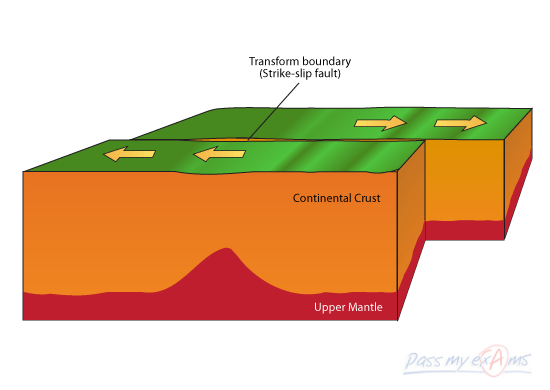Tectonic Plate Motion
Transform Boundaries
A transform boundary is the zone between two tectonic plates sliding past on another. At transform boundaries the two tectonic plates grind past each other in a horizontal direction. This movement result in a crack or fracture in the Earth’s crust and is called a fault.
Transform boundaries are responsible for Earthquakes. The edges of transform boundaries are jagged and as they slide past one another they can catch and stick, locking the plates at a particular point. When the plates become locked they cannot move and tremendous stresses build up at the fault line. When this stress is released the plates suddenly slip into a new position. It is this sudden movement of the plates that causes earthquakes.
Most transform boundaries are found on the ocean floors however a few occur on land. The San Andreas fault zone in California is an example of a transform boundary. It is approximately 1,300 kilometres long as is formed by the Pacific plate grinding past the North American plate. This has been taking place over the last 10 million years at an average rate of 5 centimetres per year.

